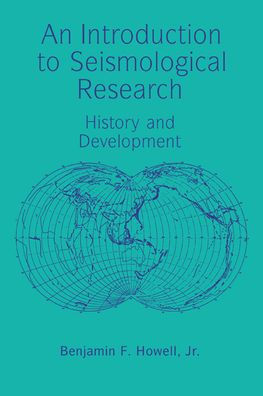An Introduction to Seismological Research: History and Development
Modern seismology is a relatively new science; most current ideas originated no earlier than the latter half of the nineteenth century. The focus of this book is on seismological concepts, how they originated and how they form our modern understanding of the science. A history of seismology falls naturally into four periods: a largely mythological period previous to the 1755 Lisbon earthquake; a period of direct observation from then to the development of seismometers in the late 19th century; a period during which study of seismic arrival times were used to outline the structure of the earth's interior extending the 1960s; the modern era in which all aspects of seismic waves are used in combination with trial models and computers to elucidate details of the earthquake process. This history attempts to show how modern ideas grew from simple beginnings. Ideas are rarely new, and their first presentations are often neglected until someone is able to present the evidence for their correctness convincingly. Much care has been used to give the earliest sources of ideas and to reference the basic papers on all aspects of earthquake seismology to help investigators find such references in tracing the roots of their own work.
1117323863
An Introduction to Seismological Research: History and Development
Modern seismology is a relatively new science; most current ideas originated no earlier than the latter half of the nineteenth century. The focus of this book is on seismological concepts, how they originated and how they form our modern understanding of the science. A history of seismology falls naturally into four periods: a largely mythological period previous to the 1755 Lisbon earthquake; a period of direct observation from then to the development of seismometers in the late 19th century; a period during which study of seismic arrival times were used to outline the structure of the earth's interior extending the 1960s; the modern era in which all aspects of seismic waves are used in combination with trial models and computers to elucidate details of the earthquake process. This history attempts to show how modern ideas grew from simple beginnings. Ideas are rarely new, and their first presentations are often neglected until someone is able to present the evidence for their correctness convincingly. Much care has been used to give the earliest sources of ideas and to reference the basic papers on all aspects of earthquake seismology to help investigators find such references in tracing the roots of their own work.
50.0
In Stock
5
1

An Introduction to Seismological Research: History and Development
204
An Introduction to Seismological Research: History and Development
204Paperback(Revised ed.)
$50.00
50.0
In Stock

Product Details
| ISBN-13: | 9780521675512 |
|---|---|
| Publisher: | Cambridge University Press |
| Publication date: | 07/14/2005 |
| Edition description: | Revised ed. |
| Pages: | 204 |
| Product dimensions: | 6.14(w) x 9.21(h) x 0.43(d) |
From the B&N Reads Blog
